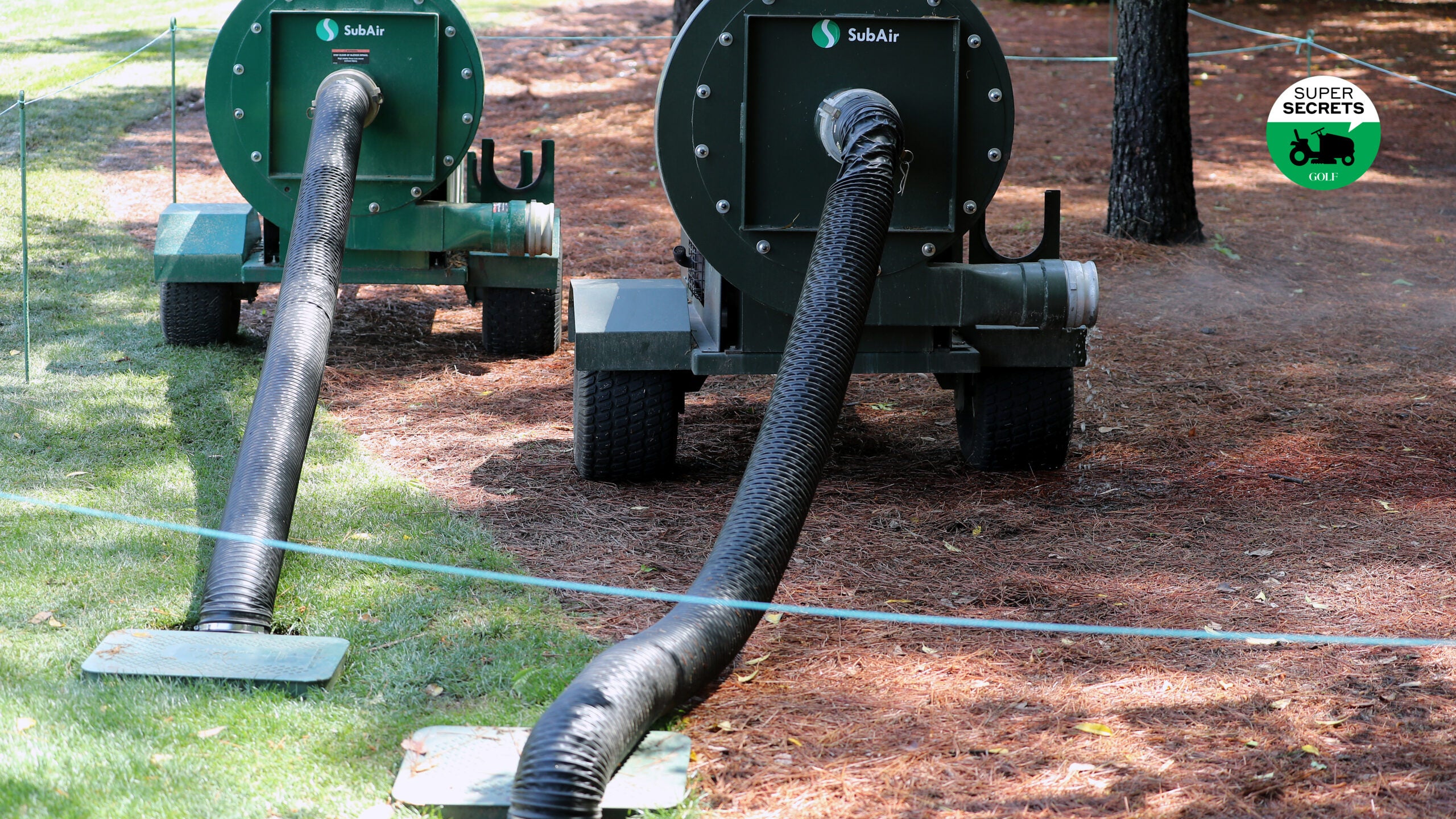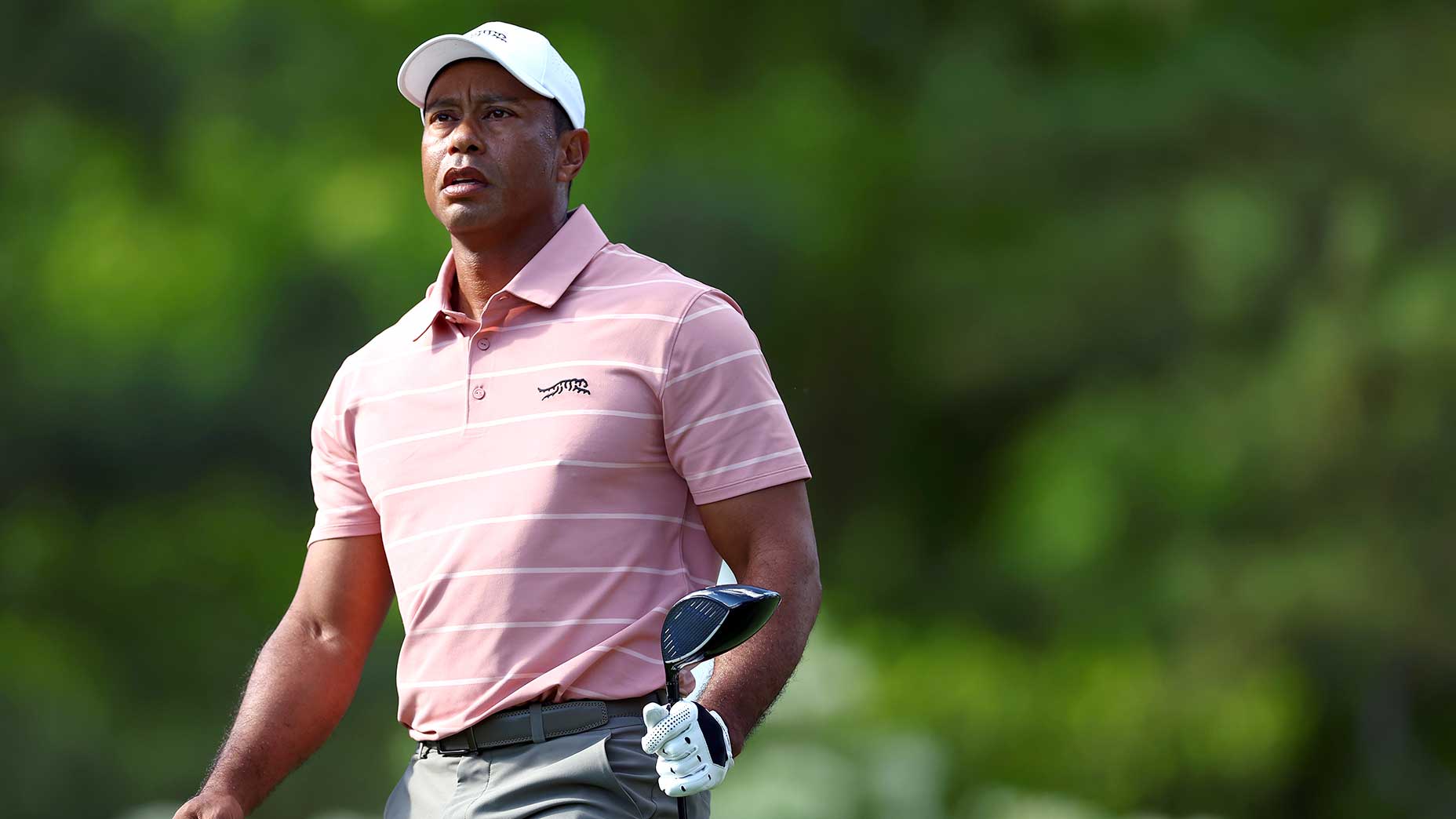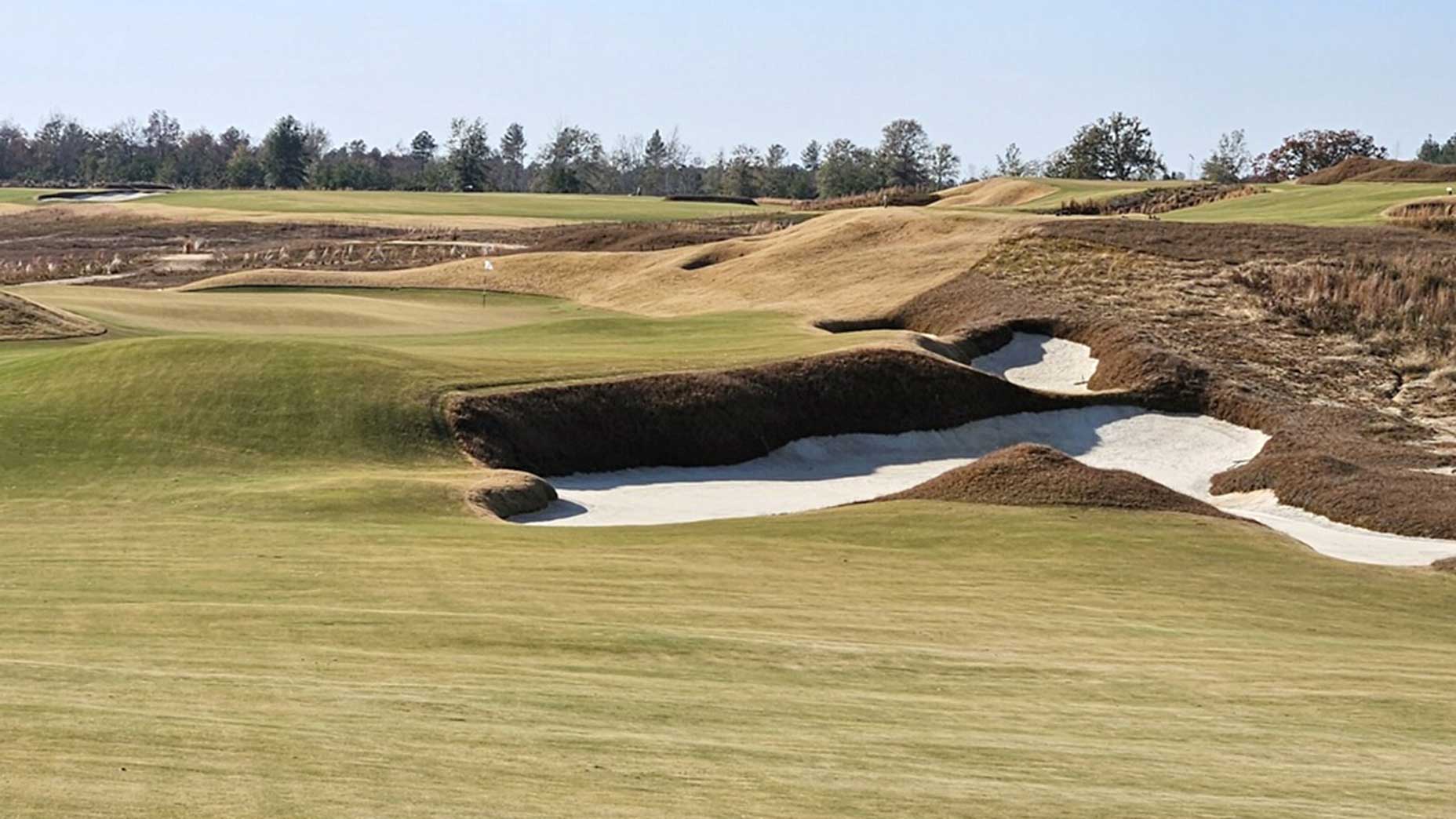
When the skies open over Augusta National, the club’s SubAir system kicks into gear
Getty Images/David Cannon
Forecasting the weather can be a tricky task. But here’s a prediction that never fails. Whenever the skies open over Augusta National Golf Club, as they did on the eve of this Masters, stories are bound to surface about SubAir, the subterranean turf-care technology that helps keep Augusta’s greens running firm and fast even when the rain comes down in buckets.
No doubt you’ve heard the term. But what, exactly, is SubAir, and how does it work? Here’s a primer on a system that’s always out of sight but rarely far from mind during Masters week.
What’s in a name?
Like Kleenex and Xerox, SubAir is a brand name that has bloomed into an umbrella term, covering an entire category of underground systems, produced by different manufacturers, that move air through drainage pipes beneath putting greens. As the USGA green section senior director of agronomy Darin Bevard puts it in a recent article for the Green Section Record, SubAir systems vary in their capabilities. “Some only move air in or out of the drainage system, while others have the ability to heat or cool the air to change the putting green soil temperatures.”
What are the key components?
A labyrinth of pipes, pumps, vacuums, valves, panels and sensors that work in concert, in a push-me, pull-you fashion, to suck excess moisture out of subsoil and pour fresh oxygen in. Sophisticated systems have the capacity to moderate the soil’s temperature by as much as 6 to 8 degrees, which can effectively extend the growing season for turf, either by warming the soil to help awaken the plant or cooling it to relieve heat stress. The systems can be controlled manually, set on a timer, or activated by computer of smart phone.
What are the limits?
SubAir systems, Bevard writes, are often cast as “silver bullets.” But they aren’t magic. If ark-building weather drags on and on, no amount of moisture-sucking and temperature-regulating will ready greens for play, as we saw at last year’s Masters, when deluges caused delays on both Friday and Saturday. Overall turf health is a big factor, too. If a green has excess thatch, of instance, (as in, a thick layer of dead organic material between the grass blades and the soil), it is more likely to retain moisture and remain spongy, no matter how hard you get aSubAir system cranking. Not that poor turf health is an issue at Augusta National. Point is, though, in the end, nature has the final say.
What does a SubAir system cost?
Depends on the system and the size of the greens. But industry sources have told GOLF.com that the price roughs out to around $25,000 per green, though that can drop in package deals, where the more greens you equip with SubAir, the less each system costs. Although when it comes to Augusta National, price is never an issue.








